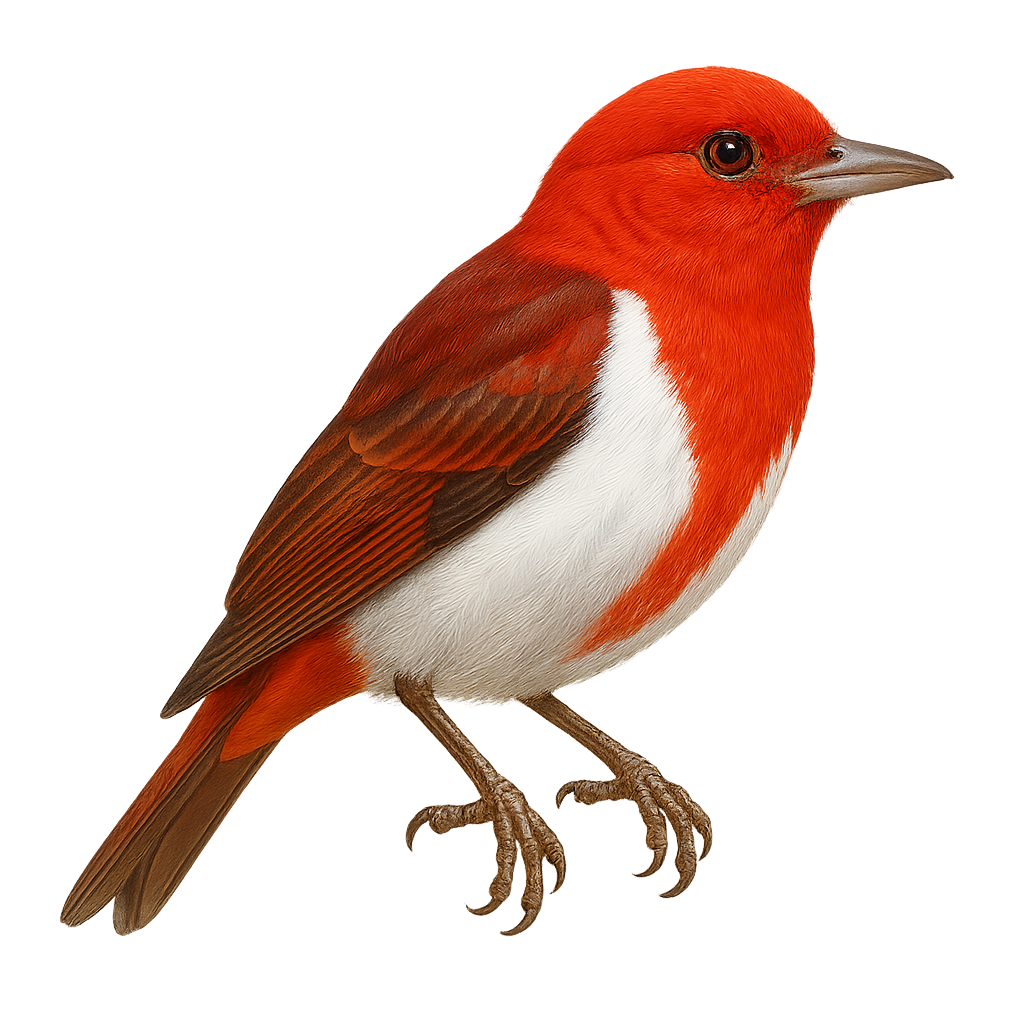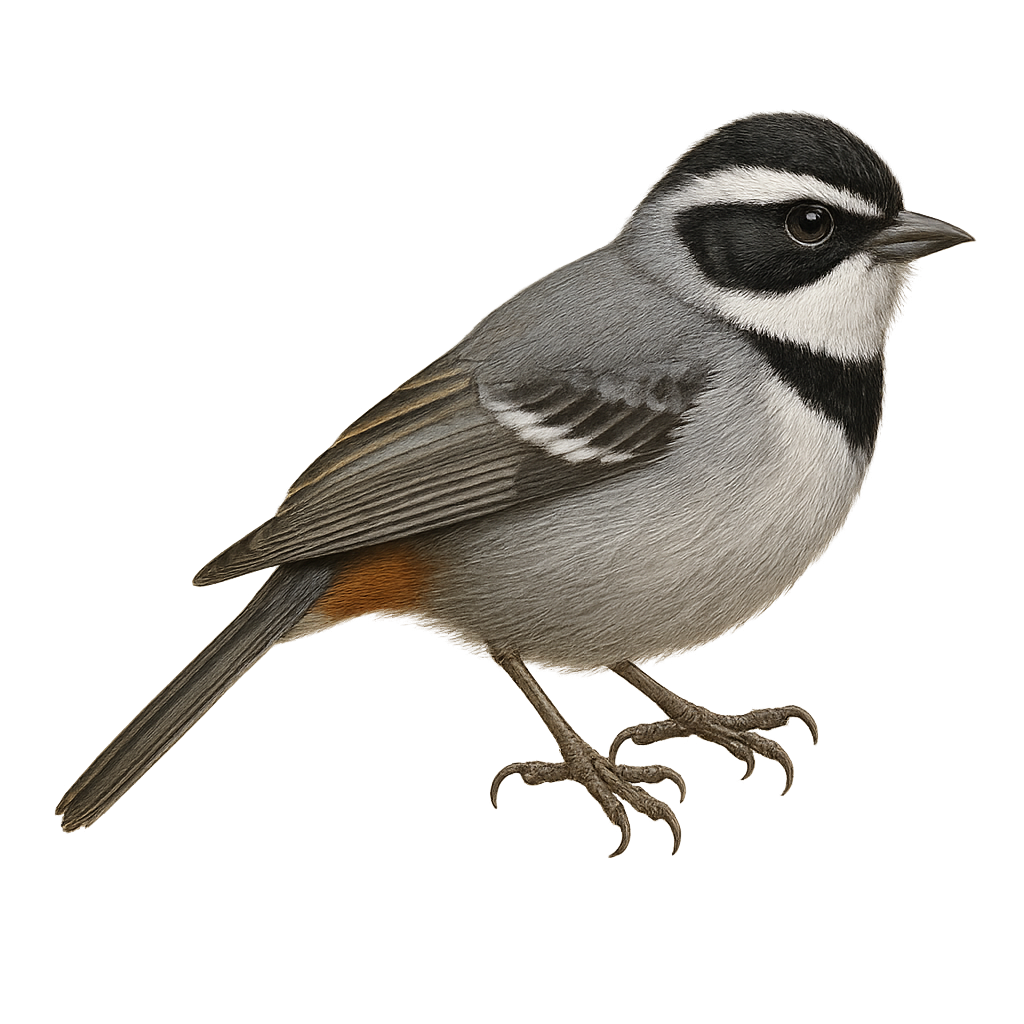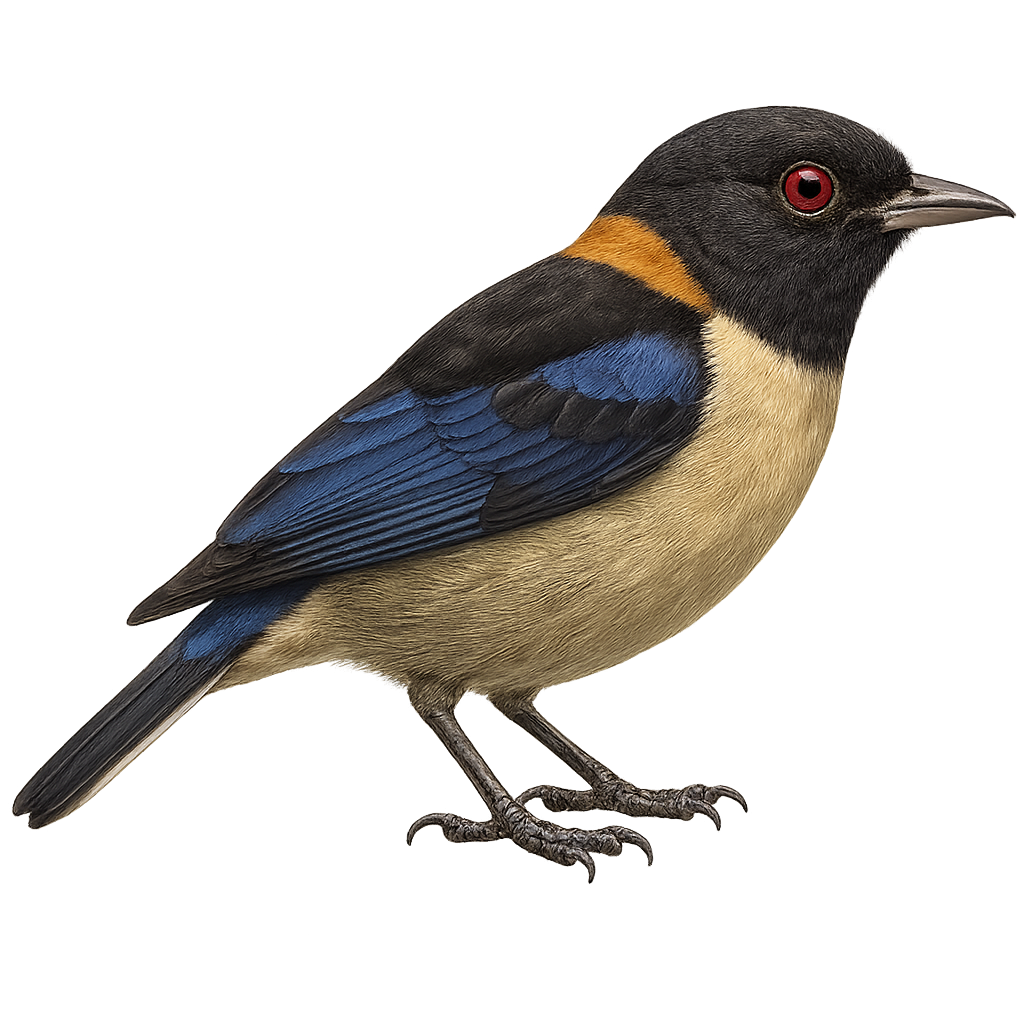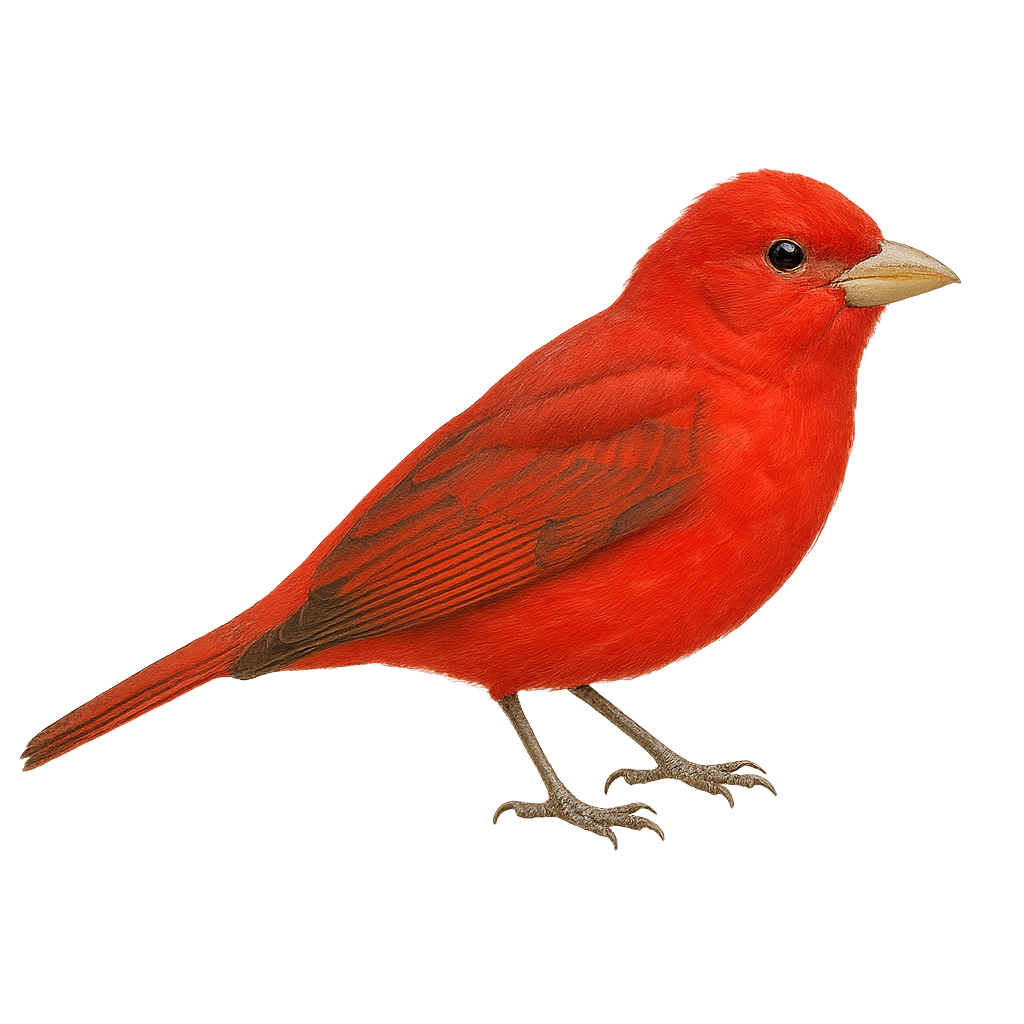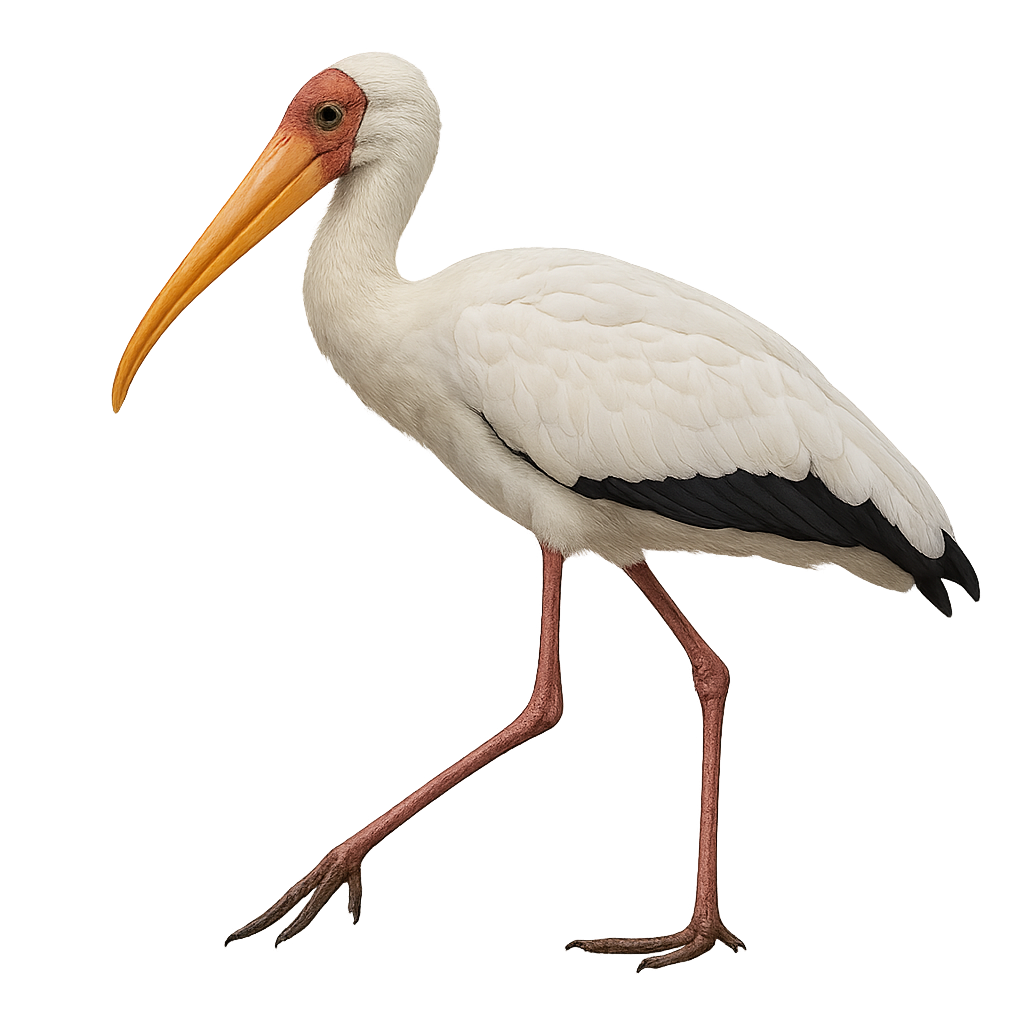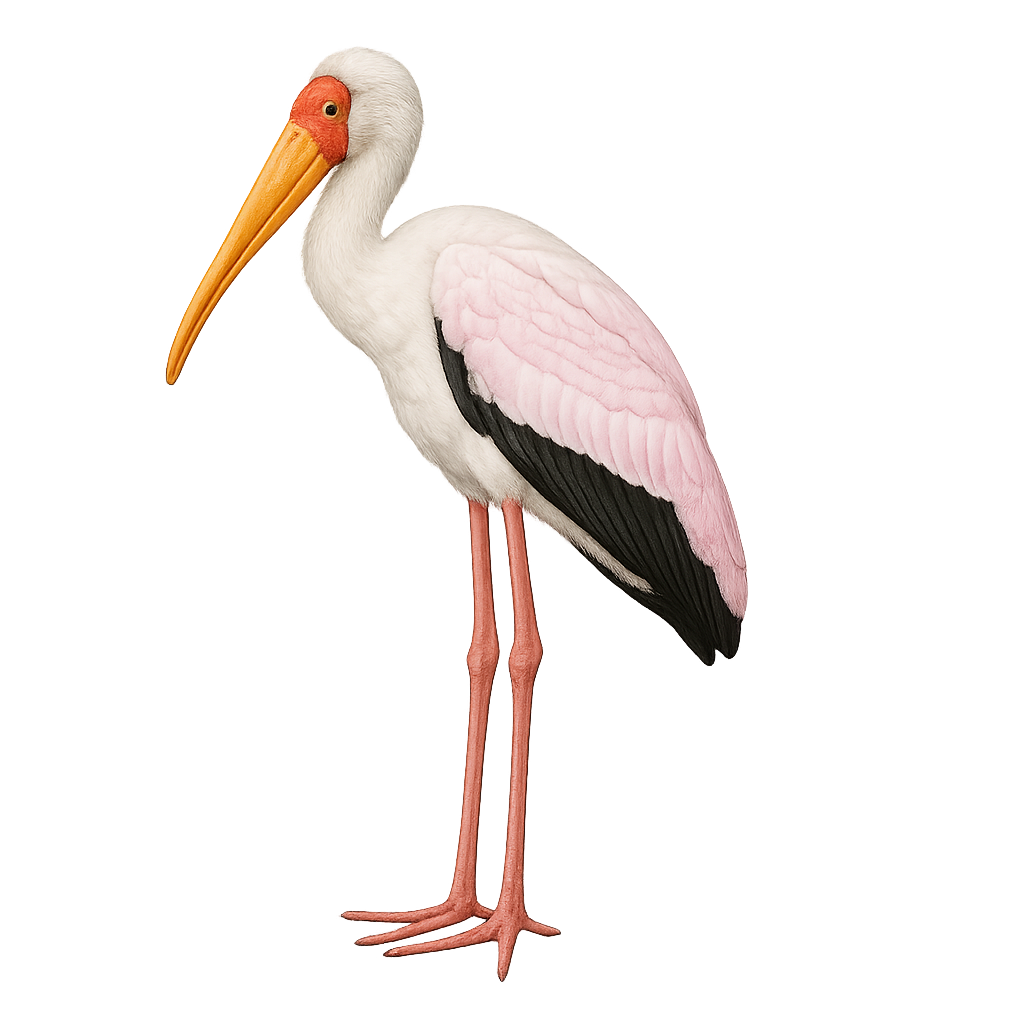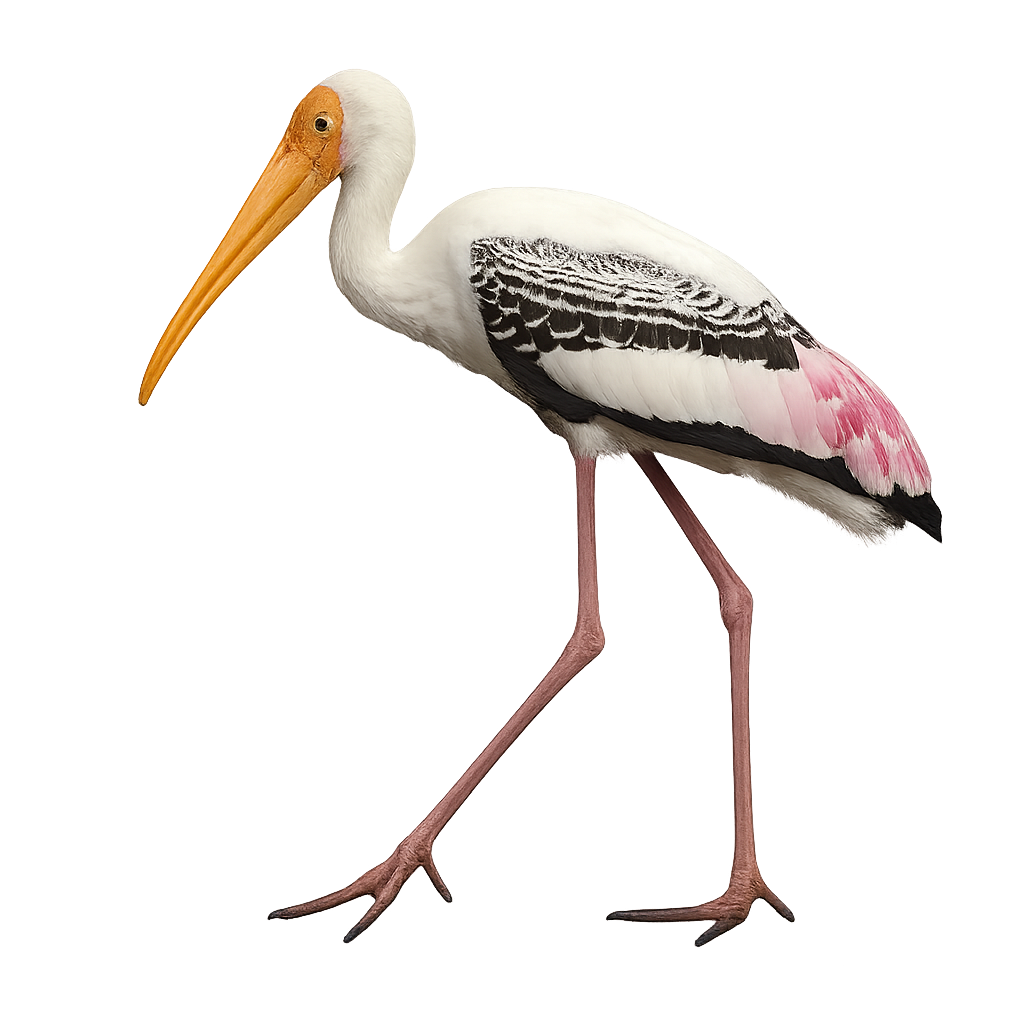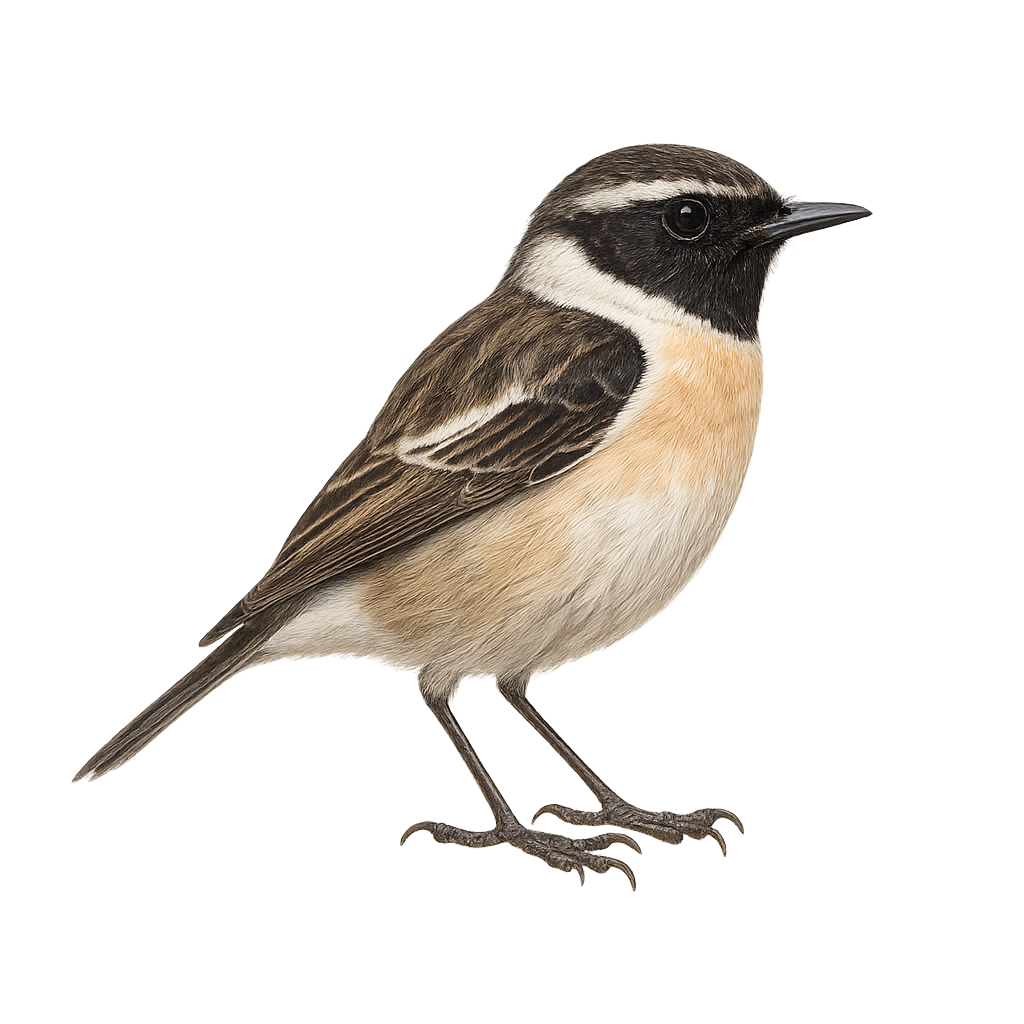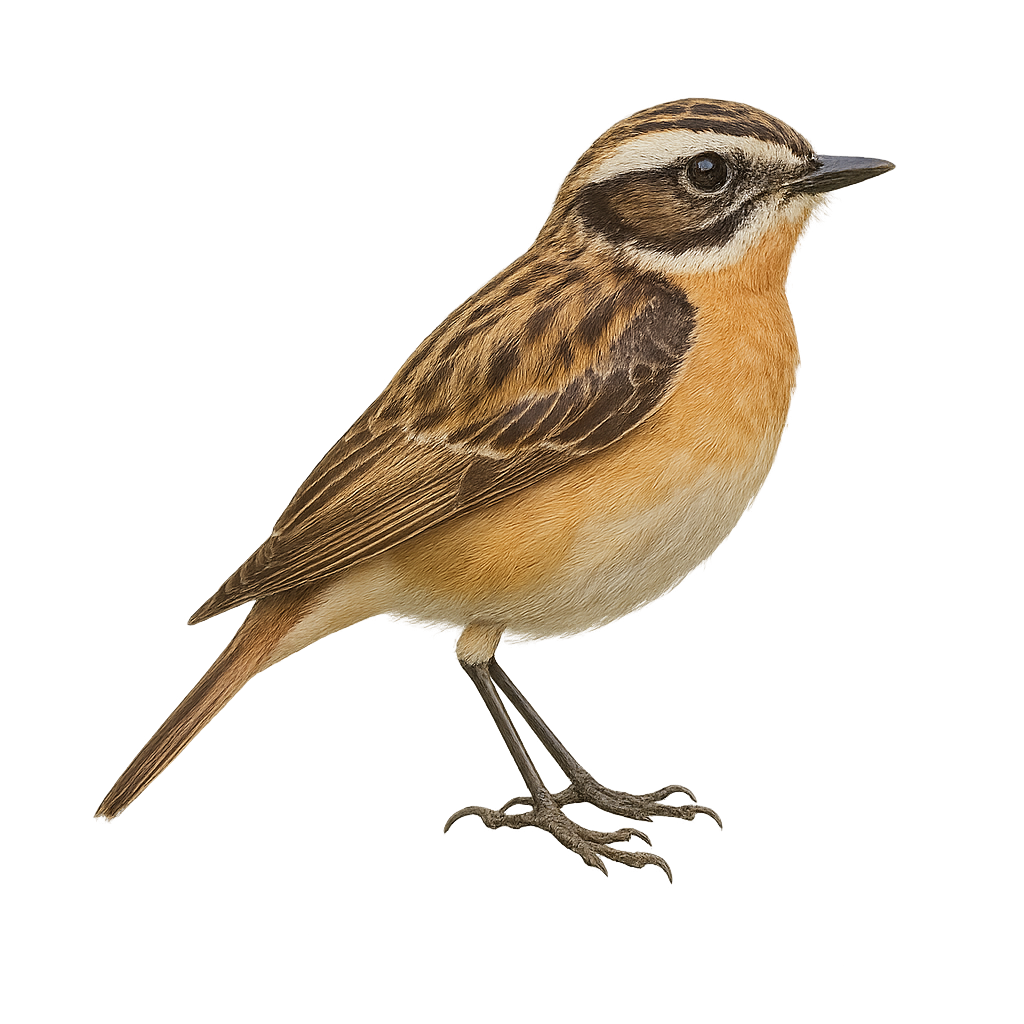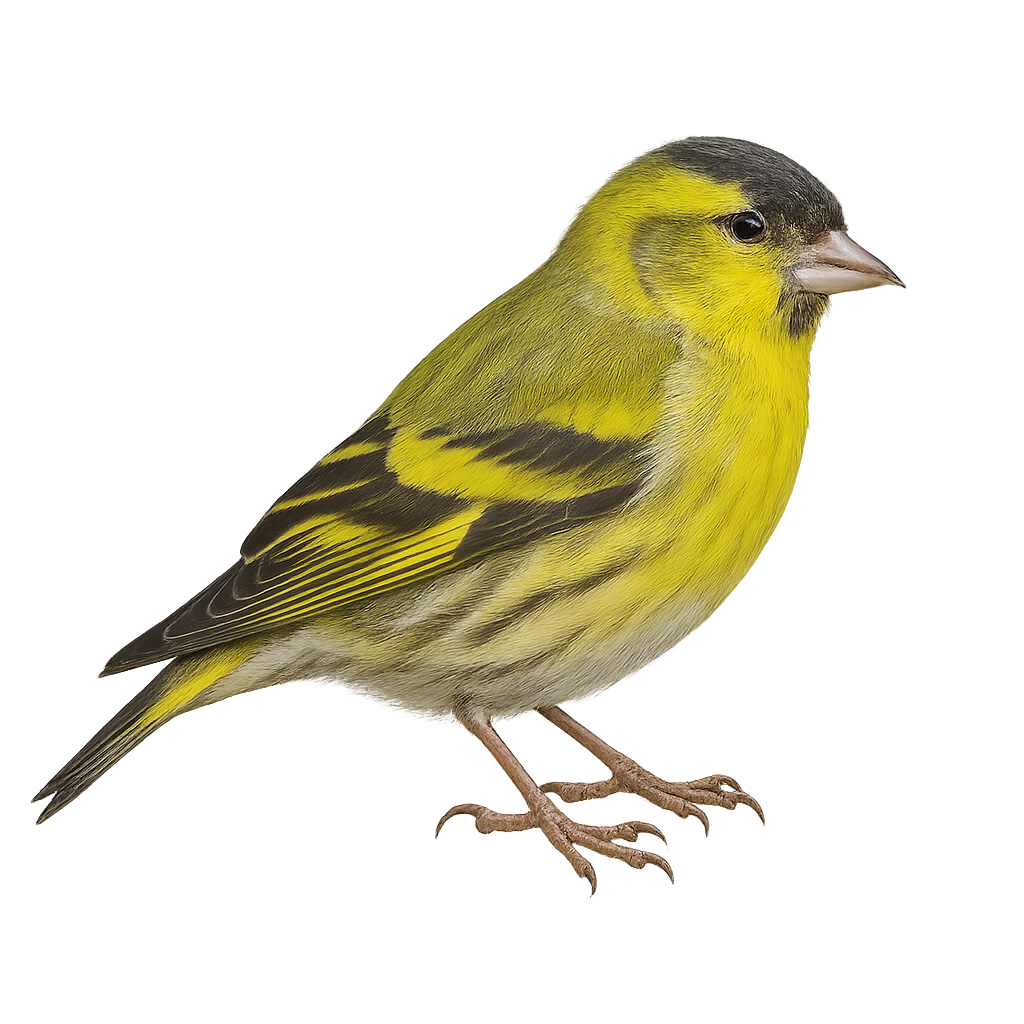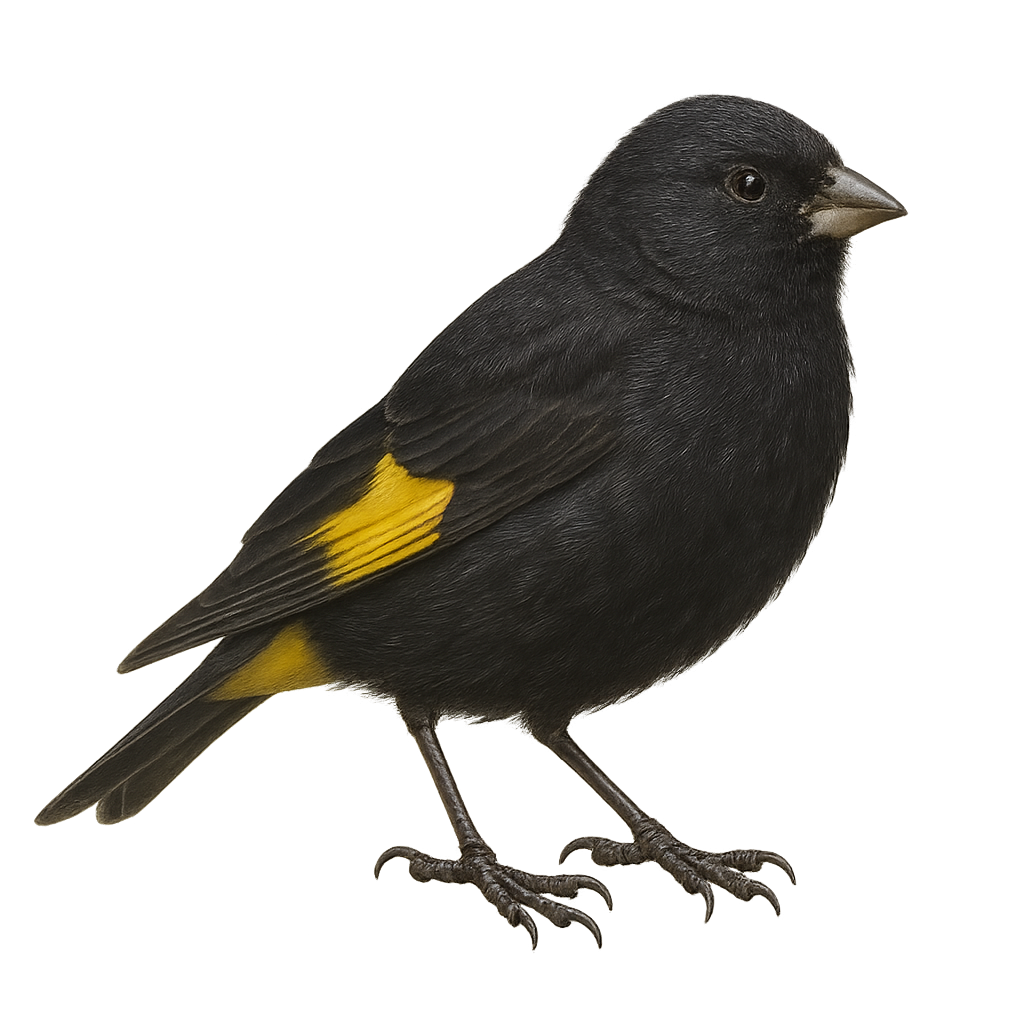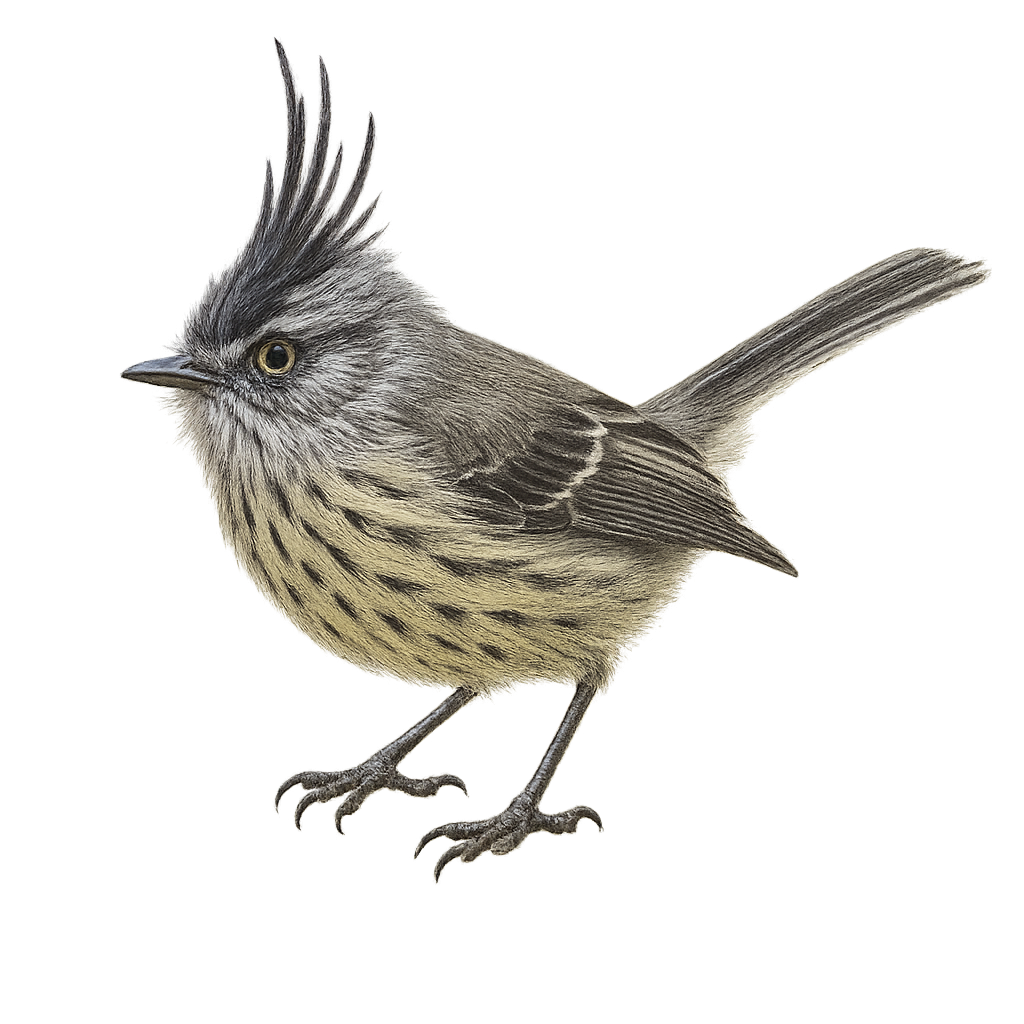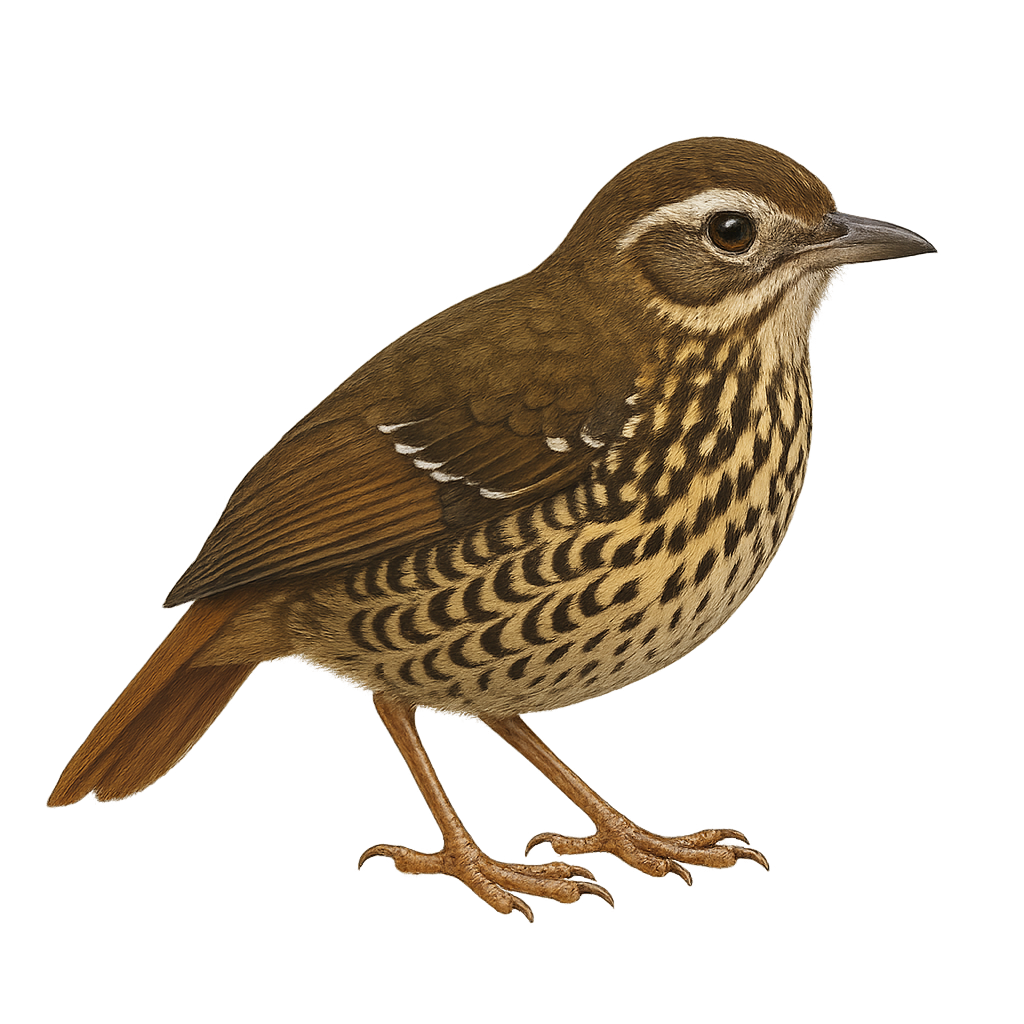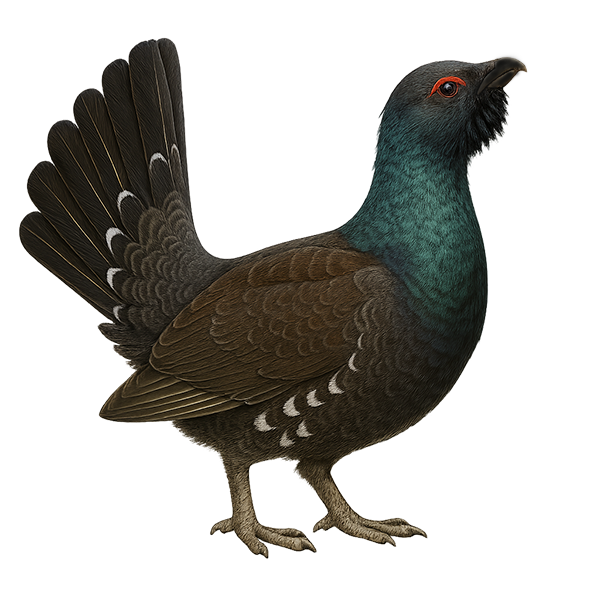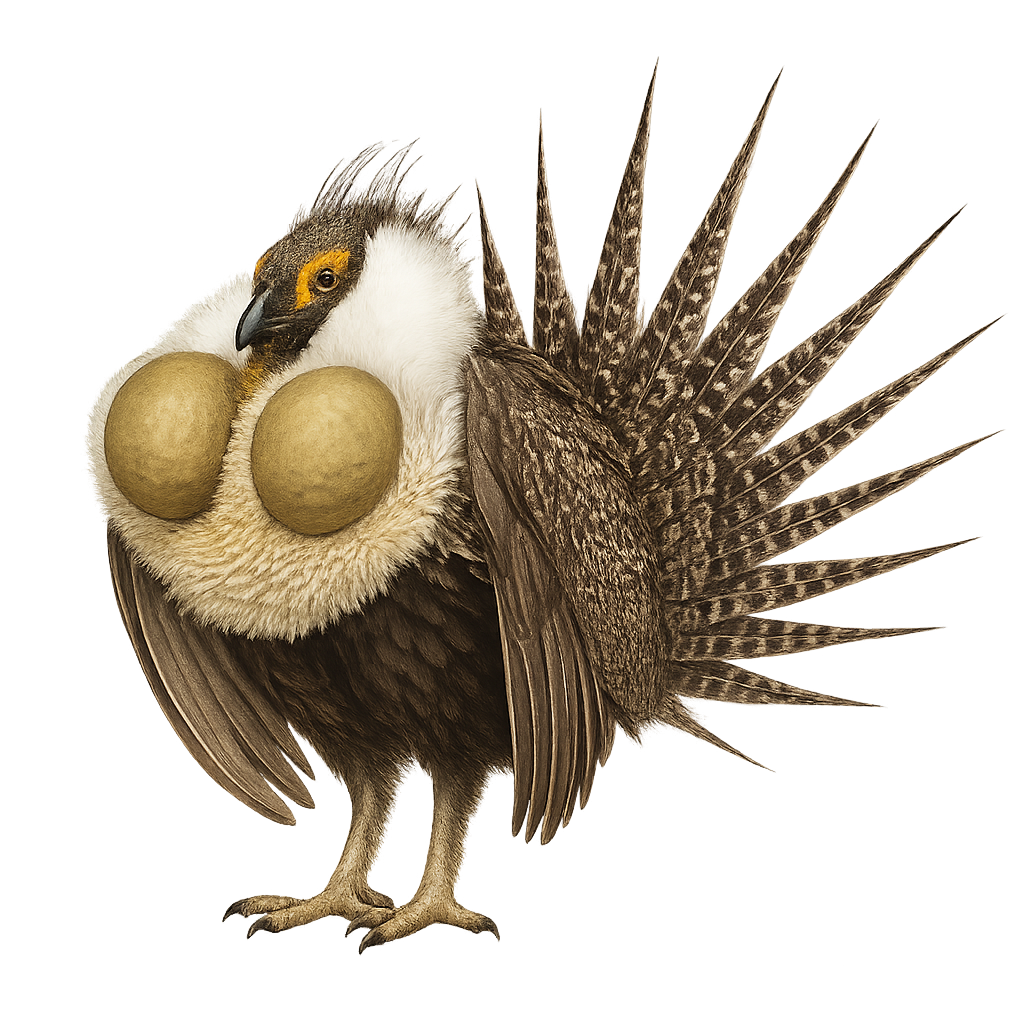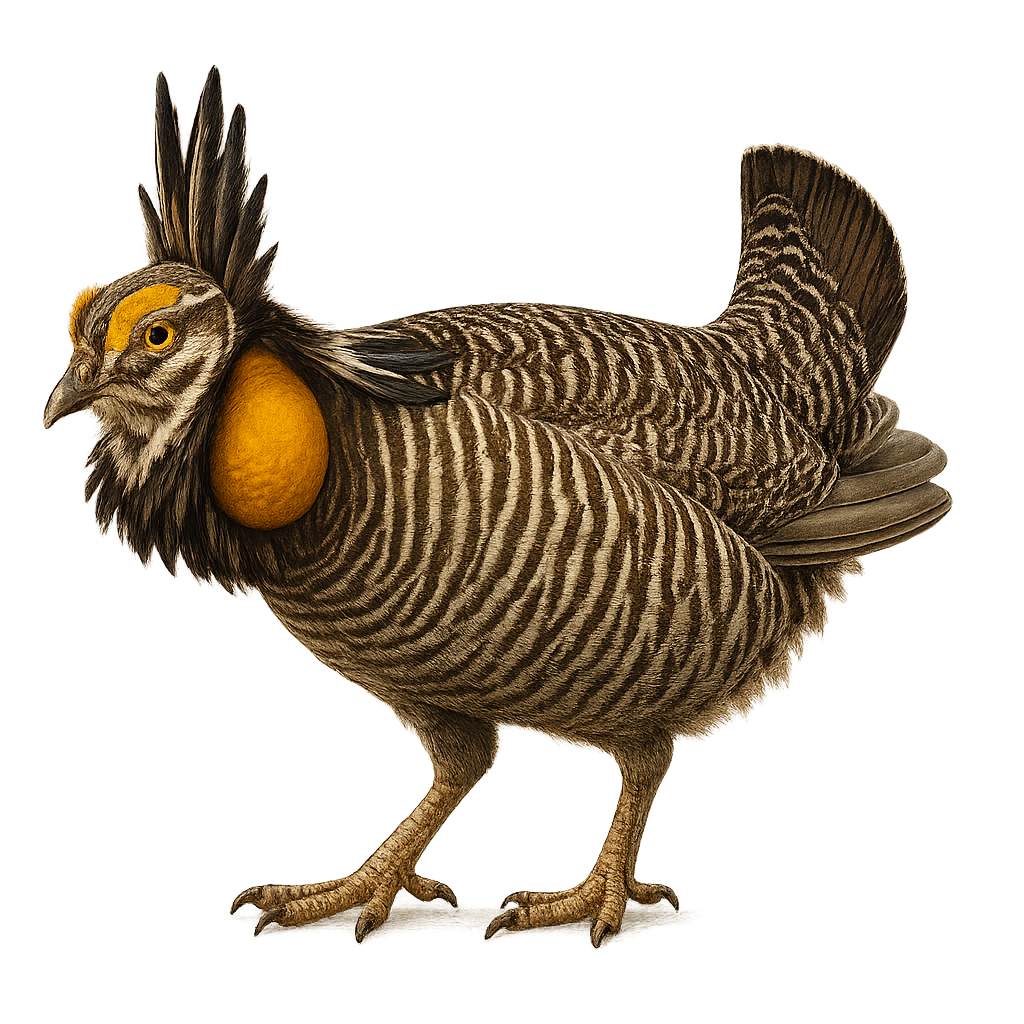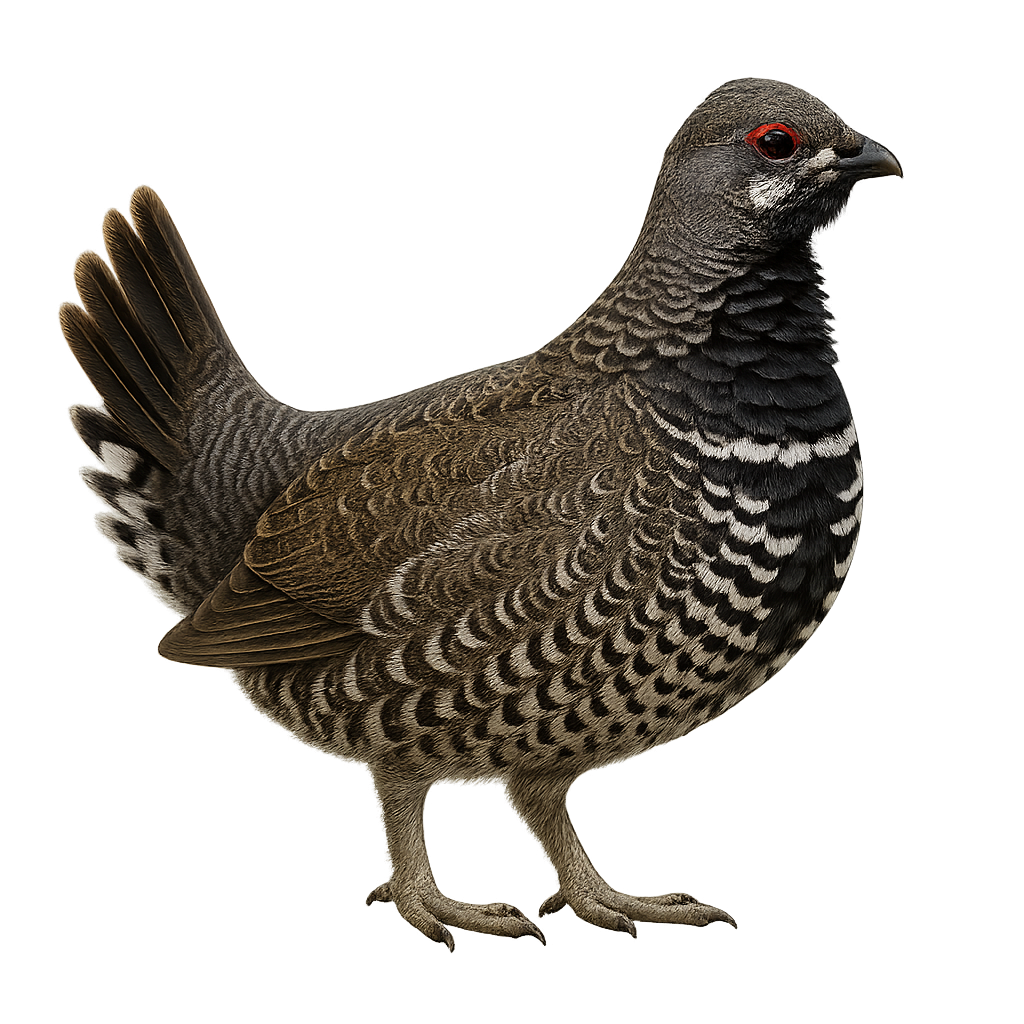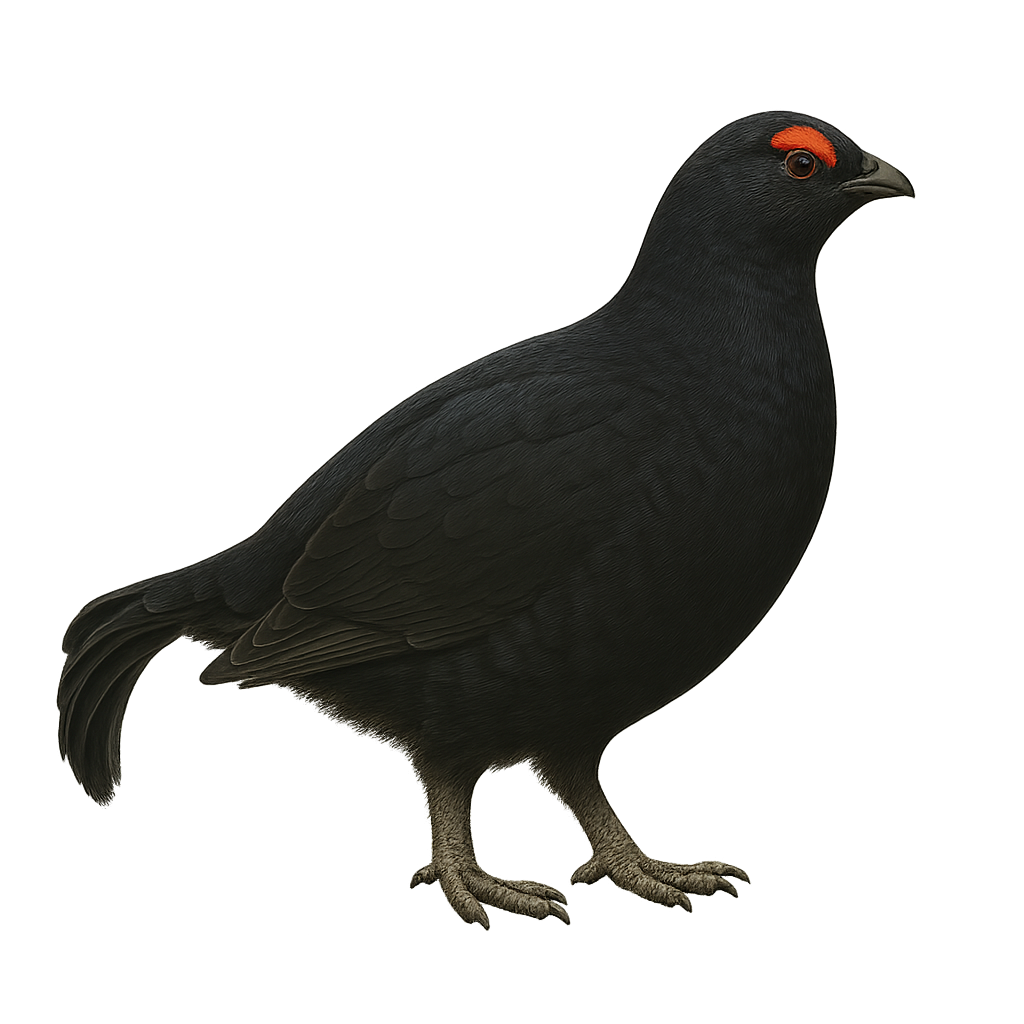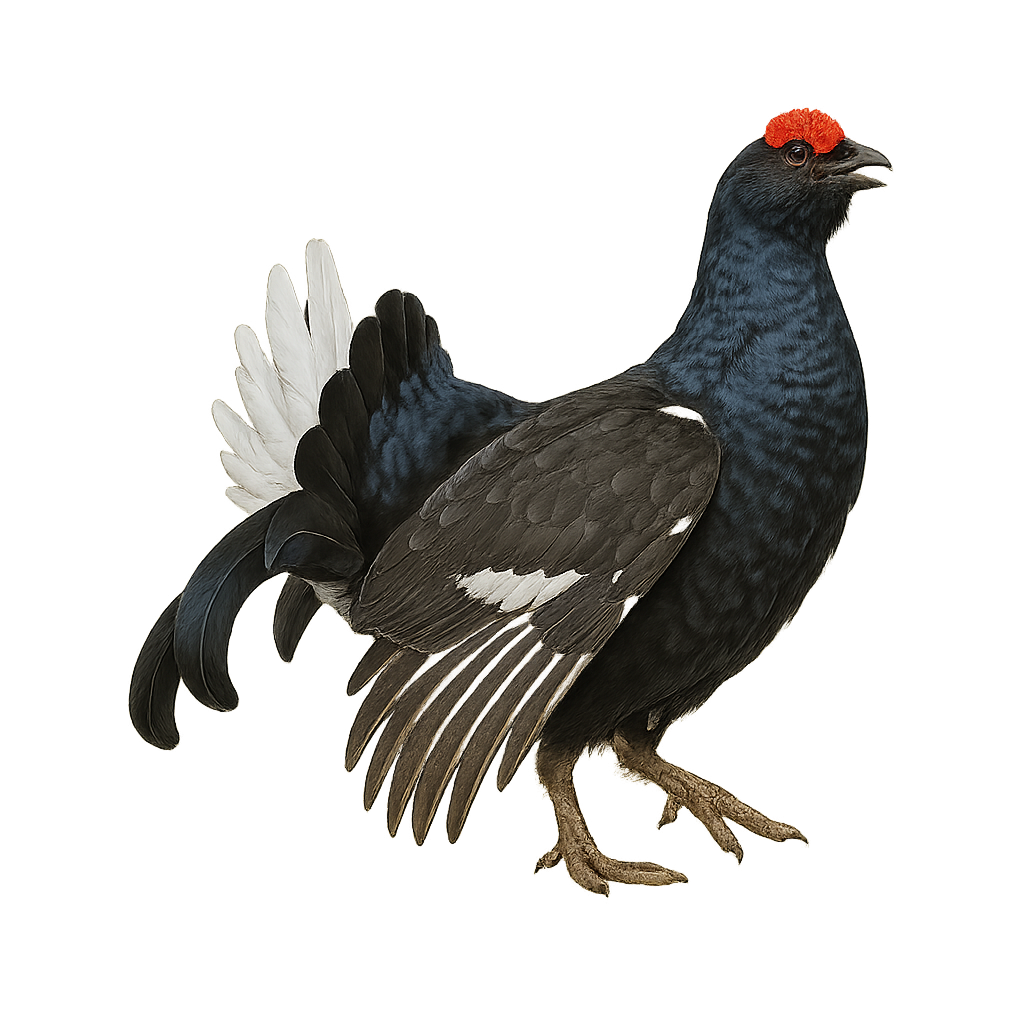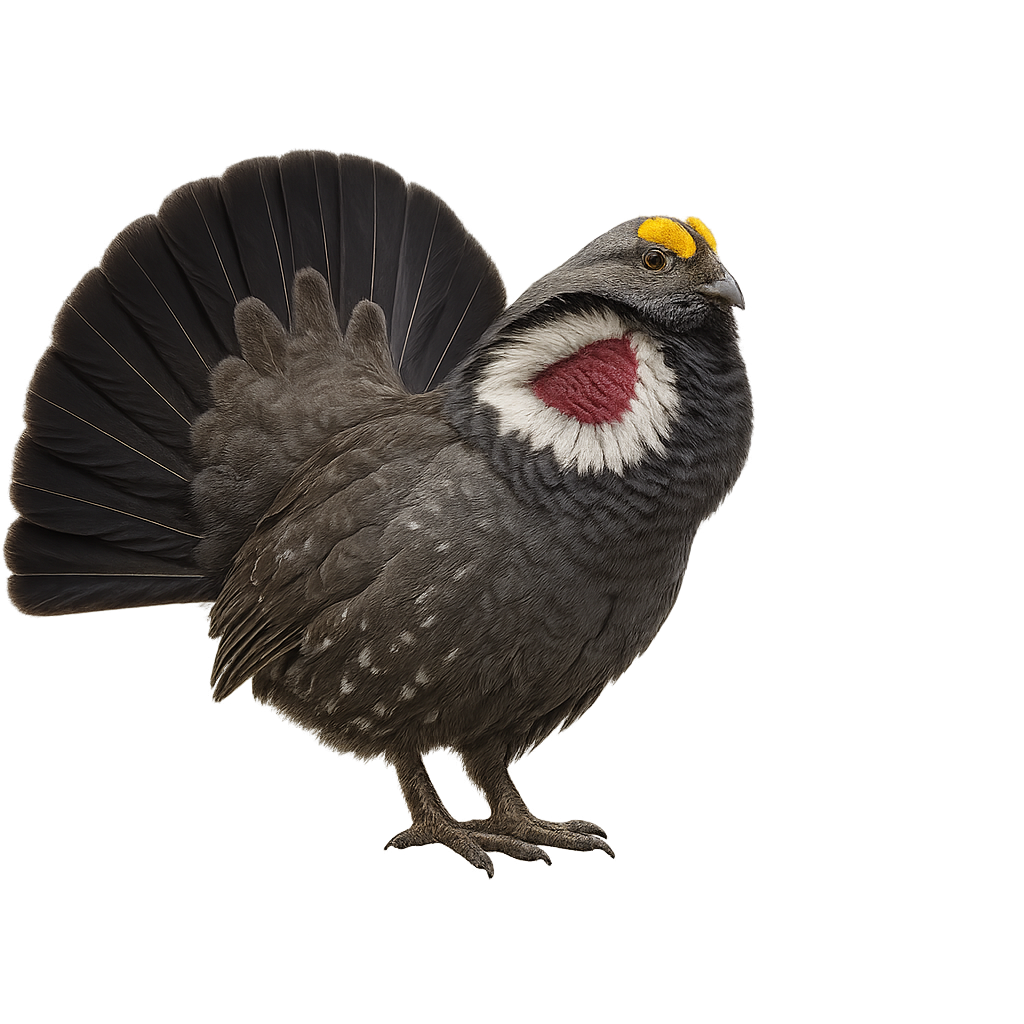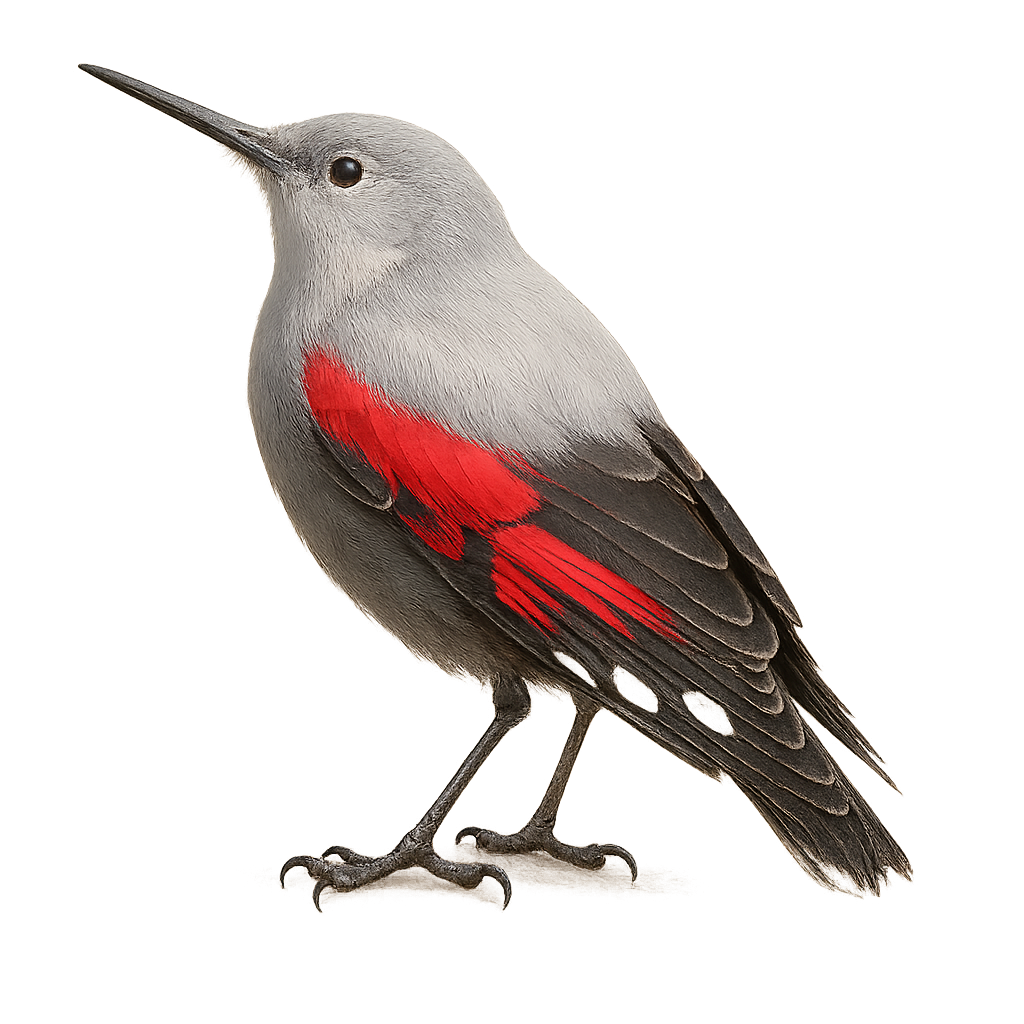The Scarlet-and-white Tanager, or Chrysothlypis salmoni, is a bird from the Thraupidae family, primarily found in the humid montane forests of Central and South America. This small passerine is notable for its striking plumage: males have a vivid red head contrasting with a white body, while females display more subdued tones. They typically live in pairs or small groups, feeding on fruits, insects, and nectar. Their melodious and varied song is often heard at dawn and dusk. Although their habitat is threatened by deforestation, they remain relatively common in some protected areas.
The Ringed Warbling-Finch, or Microspingus torquatus, is a small passerine bird belonging to the Thraupidae family. It is primarily found in the arid and semi-arid regions of South America, particularly in Argentina, Bolivia, and Paraguay. This bird is characterized by its bluish-gray plumage with a distinctive black collar around the throat. The wings and tail exhibit shades of brown and black. The Ringed Warbling-Finch is a diurnal bird, often seen in small groups or pairs, feeding mainly on seeds and insects. Known for its melodious song, it is often heard at dawn. Although relatively common in its natural habitat, it is crucial to protect its living areas from environmental threats.
The Sayaca Tanager is a medium-sized bird, measuring about 18 cm in length. It is easily recognizable by its blue-gray plumage, with lighter shades on the belly and slightly darker wings. The eyes are surrounded by a distinctive white ring. This bird is primarily frugivorous but also feeds on insects and nectar. It inhabits various environments, including secondary forests, gardens, and urban areas. Often seen in small groups or pairs, the Sayaca Tanager is a sociable and not very shy bird, making it easy to observe. It is widely distributed in South America, particularly in Brazil, Argentina, and Paraguay.
The Golden-collared Honeycreeper, or Iridophanes pulcherrimus, is a small, striking bird from South American montane forests, with vibrant plumage combining bright blue, vivid yellow, and deep black. It inhabits forest edges, shrubby zones, and cloud forests from Venezuela to northern Bolivia. Feeding on fruits, nectar, and insects, it often joins mixed-species flocks in the canopy. Energetic and colorful, it is a favorite among birdwatchers and nature photographers. Its population is currently considered stable.
The Summer Tanager, or Piranga rubra, is a medium-sized songbird known for its vibrant coloration. Males display bright red plumage, while females and juveniles have yellow to greenish hues. This bird is primarily insectivorous, feeding on wasps and bees, but also consumes fruits. It inhabits open forests, edges, and wooded areas. A migratory species, it spends summers in North America and winters in Central and South America. Its melodious song and distinctive calls make it a favorite among birdwatchers and nature enthusiasts.
The Milky Stork, Mycteria cinerea, is a large wading bird found in the wetlands of Southeast Asia, particularly in Indonesia and Malaysia. It is characterized by its striking white plumage, long red legs, and yellow bill. This bird is often seen foraging in shallow waters, feeding mainly on fish, crustaceans, and aquatic insects. Unfortunately, the Milky Stork is classified as vulnerable due to habitat loss and hunting. Conservation efforts are crucial to ensure its long-term survival.
The Wood Stork, or Mycteria americana, is a large wading bird known for its striking white plumage contrasted by its black head and neck. It has a long, sturdy bill, slightly curved, perfect for catching aquatic prey. This majestic bird primarily inhabits wetlands, such as marshes and mangroves, where it feeds on fish, crustaceans, and insects. The Wood Stork is often seen in groups, making it easier to spot. Although it is relatively tolerant of human presence, it is essential to maintain a respectful distance to avoid disturbing its natural behavior. Its breeding season varies by region but generally coincides with the rainy season, ensuring an abundance of food for the young.
The Yellow-billed Stork, or Mycteria ibis, is a large wading bird known for its distinctive downward-curved yellow bill and predominantly white plumage with contrasting black wings. It inhabits the wetlands of sub-Saharan Africa, feeding on fish, crustaceans, and insects. This gregarious bird is often seen in groups, especially during the breeding season. The Yellow-billed Stork nests in trees, often in mixed colonies with other wading birds. Although not currently threatened, habitat degradation poses a potential risk to its populations.
The Painted Stork, Mycteria leucocephala, is a large wading bird known for its striking white plumage, black wings edged with white, and pink bald head. It inhabits wetlands across South and Southeast Asia, feeding on fish, frogs, and aquatic insects. Its long, slightly curved bill is adept at catching prey. Breeding colonies are often located in trees near water, where pairs build large nests. Although social, the Painted Stork can be wary of humans. Its population is declining due to habitat loss and water pollution, leading to its classification as near threatened by the IUCN.
The Saxicola dacotiae, known as the Canary Islands Stonechat, is a small bird endemic to the Canary Islands, specifically Fuerteventura. This passerine is characterized by its brownish-red and white plumage, with a dark head and light belly. It primarily inhabits arid and semi-arid areas, scrublands, and rocky zones. The Canary Islands Stonechat is a sedentary bird, meaning it does not migrate and remains in its territory year-round. It feeds mainly on insects, which it catches on the ground or in flight. Although its habitat is limited, it adapts well to local conditions. However, it is considered vulnerable due to habitat degradation.
The whinchat is a small passerine bird found primarily in meadows, cultivated fields, and open areas across Europe and Asia. It is easily recognized by its brown and beige plumage, orange chest, and white markings on its head. This small bird primarily feeds on insects, which it catches by flying or by perching to observe its surroundings. The whinchat is also known for its territorial behavior and distinctive song.
The European Stonechat, Saxicola torquata, is a small passerine bird belonging to the Muscicapidae family. It is easily identifiable by its distinctive plumage: the male has a black head, white throat, and orange-brown back, while the female is duller with brownish tones. This bird is often seen perched on bushes or fences, watching for insects to feed on. It inhabits open areas such as meadows, heaths, and agricultural lands. The European Stonechat is a resident bird in temperate regions, but some populations migrate south in winter. It is known for its melodious song and short, sharp calls.
The Eurasian siskin is a small passerine of 11–12 cm with yellow-green plumage streaked with black and dark wings. It inhabits coniferous and mixed woodlands, especially alder and birch stands, feeding mainly on cone seeds and small herbaceous seeds. During breeding, pairs nest in mid-canopy conifers and raise 2–3 broods per year.
The Black Siskin, or Spinus atratus, is a small finch known for its dark plumage with bright yellow patches on its wings and tail. It is primarily found in the mountainous regions of the Andes, frequenting open areas and high-altitude grasslands. This passerine is often seen in small flocks, feeding on seeds and insects. Although relatively tolerant, it remains cautious of potential threats. Its breeding season typically coincides with the rainy season when food is plentiful. The Black Siskin plays a vital role in the ecosystem by aiding in seed dispersal.
The Tufted Tit-Tyrant, or Anairetes parulus, is a small passerine bird belonging to the Tyrannidae family. It is easily recognizable by its gray and white plumage, adorned with a distinctive tuft on its head. This bird is primarily found in the mountainous regions of South America, notably in Chile, Argentina, Bolivia, and Peru. It inhabits montane forests, shrublands, and open grasslands, often at altitudes ranging from 500 to 4000 meters. The Tufted Tit-Tyrant is an active and agile bird, often seen hopping from branch to branch in search of insects. Although it is relatively not very shy, it can be challenging to spot due to its small size and lively behavior.
The Brown-crowned Tchagra, or Tchagra australis, is a medium-sized passerine bird belonging to the Malaconotidae family. It is primarily found in wooded regions and savannas of sub-Saharan Africa. This bird is characterized by its brownish head, grey back, and wings with shades of brown and black. Its melodious and varied song is often heard at dawn and dusk. The Brown-crowned Tchagra is a discreet bird, preferring to hide in dense bushes. It mainly feeds on insects but can also consume small fruits. Although it is quite widespread, it can be difficult to spot due to its wary behavior and often dense habitat.
The Black-crowned Tchagra is an elegant and discreet bird, easily recognizable by its black crown contrasting with its brown back and white belly. It primarily inhabits the savannas, open forests, and thickets of sub-Saharan Africa. This bird is often seen alone or in pairs, moving agilely through dense vegetation. Its melodious song, composed of soft and varied whistles, often resonates at dawn and dusk. Although relatively tolerant of human presence, it prefers to stay out of sight, blending into its natural environment. Its ability to adapt to various habitats makes it a common resident in many regions.
The Asian Paradise Flycatcher, or Terpsiphone paradisi, is an elegant and fascinating bird known for its long tail feathers in males. It boasts a striking white plumage with a black head and distinctive crest. Females are more subdued with brownish hues. This bird is primarily insectivorous, feeding on flies, butterflies, and other small insects caught in flight. It is often found in tropical and subtropical forests, as well as gardens and parks. The Asian Paradise Flycatcher is a partial migrant, moving seasonally to find optimal living conditions.
The Rufous-tailed Antthrush is a discreet, ground-dwelling bird belonging to the Formicariidae family. It is primarily found in the humid forests of eastern Brazil, often hiding in dense vegetation. This medium-sized bird, measuring about 20 cm, is distinguished by its brownish-red plumage and long rufous tail. Its melodious and repetitive song is often heard before the bird is seen. The Rufous-tailed Antthrush feeds mainly on insects and other small invertebrates found by foraging on the forest floor. Known for its shy nature, observing this bird is a challenge for birdwatching enthusiasts.
The Black-billed Capercaillie, or Tetrao urogalloides, is a striking bird from the Phasianidae family. It primarily inhabits the boreal forests of Siberia and the Russian Far East. This bird is recognizable by its dark plumage and impressive size, with males reaching up to 90 cm in length. Males display black plumage with metallic sheen, while females are more subdued with mottled brown feathers. The Black-billed Capercaillie is a sedentary bird that feeds mainly on buds, leaves, and berries. It is known for its spectacular courtship displays, where males spread their feathers and produce deep sounds to attract females.
The Siberian Grouse, or Falcipennis falcipennis, is a bird from the Phasianidae family, mainly found in the boreal forests of the Russian Far East. This medium-sized bird, measuring about 38 to 45 cm in length, is notable for its dark plumage and subtle patterns that allow it to blend into its surroundings. Males display black feathers with metallic sheens, while females have more brownish plumage. The Siberian Grouse is a sedentary bird, preferring dense coniferous forests where it feeds primarily on buds, leaves, and berries. Although discreet, it is sometimes observed during its spring courtship displays.
The Sage Grouse, known scientifically as Centrocercus urophasianus, is a notable bird of the North American prairies. It is distinguished by its large size and mottled brown, white, and black plumage. Males are particularly striking with their white ruff and yellow air sacs, which they inflate during courtship displays. This species relies heavily on vast sagebrush landscapes for feeding and breeding. Unfortunately, habitat destruction has led to a significant decline in its population. The Sage Grouse is a social bird, often seen in small groups, especially outside the breeding season. Conservation efforts are crucial for its survival.
The Greater Prairie-Chicken, or Tympanuchus cupido, is a notable bird of the North American Great Plains. Known for its brown and white plumage, it is famous for its elaborate courtship displays where males inflate their orange air sacs and produce deep booming sounds to attract females. These birds primarily inhabit open prairies, feeding on seeds, insects, and small fruits. Unfortunately, their habitat is threatened by intensive agriculture and urbanization, leading to a significant population decline. Conservation efforts focus on protecting and restoring their natural habitats to ensure their long-term survival.
The Spruce Grouse, or Canachites canadensis, is a discreet forest bird primarily found in the boreal forests of North America. It is well adapted to its environment, with plumage that blends seamlessly into the underbrush. This medium-sized bird, measuring about 38 to 43 cm, is recognizable by its brown and gray plumage, speckled with white patterns. Males display a red patch above the eye, particularly visible during the breeding season. The Spruce Grouse feeds mainly on conifers but can also consume insects and berries. It is known for its discreet behavior and ability to remain still to avoid predators.
The Caucasian Black Grouse, or Lyrurus mlokosiewiczi, is a captivating bird native to the Caucasus Mountains. This medium-sized grouse is distinguished by the male's glossy black plumage with metallic sheens and lyre-shaped tail. The female, more subdued, has mottled brown feathers that provide excellent camouflage. These birds primarily inhabit alpine meadows, coniferous forests, and shrublands. They are renowned for their spectacular courtship displays, where males gather to showcase their plumage and produce distinctive sounds. Although their population is stable, they face threats from habitat loss and human disturbance.
The Western Capercaillie, or Lyre Grouse, is a large bird primarily found in the coniferous forests and wooded areas of Eastern and Northern Europe, notably in Scandinavia, Russia, and Poland. It typically measures about 40 to 50 cm in length and weighs between 500 and 800 g. Its plumage is mainly brown and black, with white markings and red hues on the chest. The Lyre Grouse is particularly famous for the spectacular courtship dance of the male, who spreads his feathers in a lyre shape to attract a female. It primarily inhabits dense forest habitats and feeds on berries, seeds, young shoots, and insects. While its population remains relatively stable in some areas, the Lyre Grouse is threatened by habitat loss, deforestation, and human disturbances.
The Dusky Grouse, or Dendragapus obscurus, is a medium-sized bird belonging to the Phasianidae family, primarily found in the mountainous regions of western North America. This bird is characterized by its dark gray, almost black plumage, and white markings on its wings. Males display a fan-shaped tail and a yellow vocal sac that inflates during the breeding season to attract females. The Dusky Grouse prefers forested habitats, particularly coniferous forests and shrublands. It mainly feeds on leaves, buds, and insects. Although generally discreet, it can be observed during its spectacular courtship displays.
The Wallcreeper is a small bird found primarily in rocky cliffs and mountains of Europe, notably in the Alps, the Pyrenees, and the Carpathians. It typically measures about 14 to 16 cm in length and weighs between 12 and 20 g. Its plumage is characterized by distinct patterns of white, gray, and black, with very prominent white markings on its wings. The Wallcreeper is an excellent climber, capable of moving on almost vertical rock faces thanks to its strong claws. It primarily feeds on insects, small arachnids, and larvae that it finds in rock crevices. Although it is a relatively rare bird, the Wallcreeper is threatened by the disturbance of its rocky habitats, particularly due to urbanization and the exploitation of natural resources.
The Black-throated Babbler, or Stachyris nigricollis, is a discreet and fascinating bird primarily inhabiting the tropical forests of Southeast Asia. This small passerine is recognizable by its black throat contrasting with its olive-brown plumage. It mainly feeds on insects and small invertebrates, which it finds by rummaging through dense undergrowth. Although often difficult to observe due to its suspicious nature, it is frequently heard thanks to its melodious and repetitive song. The Black-throated Babbler plays an important role in the forest ecosystem by helping control insect populations. It is also an indicator of the health of tropical forests, as it is sensitive to disturbances in its natural habitat.
The Bartlett's Tinamou, or Crypturellus bartletti, is a shy, ground-dwelling bird found primarily in the humid tropical forests of the Amazon. It is medium-sized, measuring about 28 to 32 cm in length, with a reddish-brown plumage that blends seamlessly into its forest environment. Its call, often heard at dusk, is a soft whistle that echoes through the canopy. This bird is mostly solitary, feeding on fallen fruits, seeds, and insects. Although capable of flight, it prefers to run to evade predators. Its elusive nature and dense habitat make it difficult to spot, but it plays a crucial role in seed dispersal, contributing to the health of its ecosystem.


